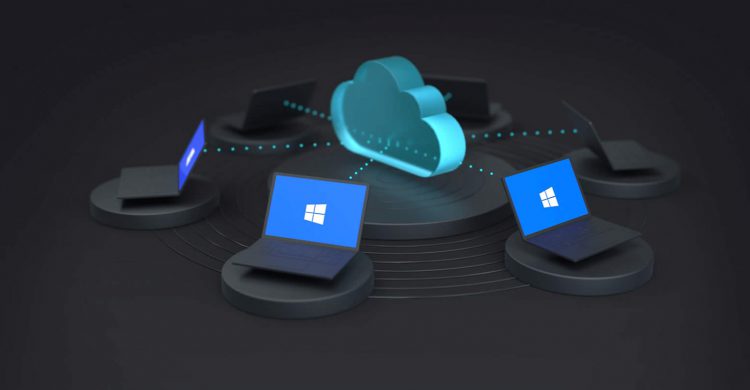What do you do when you realize that your Azure Virtual Desktop migration project is not meeting its goals? That is, that working with your current vendor will not bring you user benefits or financial and time savings? In a pinch, Accace turned to ORBIT, who was able to rescue the failed AVD migration project and make it work.

Migration to AVD: how it started
Company Accace provides accounting, tax, financial, HR and legal advisory services in approximately 50 countries and 500 companies. It also focuses on corporate training and improving the corporate culture of clients.
Prior to the start of the project, the dependent on a commercial data centre and managed its IT locally in on-premise environments - specifically in nine geographically and linguistically distinct regions. Accace wanted to break free from these dependencies and limitations and move to a secure online solution in which:
- there will be hundreds of employees connect to your desktop remotely,
- the company can make its IT environment manage centrally.
As part of their overall strategy to move from commercial data centers to cloud services, they decided to use a familiar concept virtual desktop, but using the platform service Azure Virtual Desktop (AVD).
The AVD meets the required criteria: the platform is easy to maintain, scalable and, if necessary, expandable to other geographical areas. The company therefore selected a project supplier and embarked on a journey to the cloud.
BEFORE THE START OF THE PROJECT
- on-premise desktop virtualization on the platform Microsoft Remote Desktop Services a OS Win2008R2which (among other things) did not provide the opportunity to develop towards technologies in the public cloud
Taking over a failed project
Unfortunately, it turned out that the original contractor had taken a rather academic approach to the project. According to the first results the design of the target solution did not correspond to reality. The performance of the cloud infrastructure was inadequate and failed to provide full functionality of the virtual environment for end users.
It was obvious to Accace management that this runaway train would not meet passenger expectations. It would be too expensive to operate, the speed would be slow and it would be heading for trouble instead of a destination. And so the emergency brake was pulled.
Microsoft advised Accace to contact ORBIT, Azure Virtual Desktop Specialist and the only Czech partner with the original Advanced AVD specialization. Our team took over the AVD migration project and set about exploring the "stalled train".
The four phases of migration to AVD
The redesign of the original proposal was born in four steps. After modifying the brief from the client, the migration to AVD was eventually to involve six countries with around 700 employees (Czech Republic, Slovakia, Poland, Ukraine, Hungary and Romania).
1) Hands-on analysis of current AVD machines with Windows 10 multi-session
Reading the documentation is not enough. We have experienced key company processes directly from the perspective of users and administrators. Thanks to experience in designing virtual environments for end users we are in the originally designed architecture identify bottlenecks and adapt the design of the environment to them.
2) Calculation of the new business case for the target AVD solution
The new calculations envisaged the operation of approximately 90 guests ("virtual machines") and with the following environmental characteristics:
- Azure Virtual Desktop with Windows 10 Enterprise multi-session,
- specific environments for different countries,
- FS Logix profile solution,
- connection to cloud-native Microsoft 365 services,
- possibility of easy scaling according to current requirements.
3) Optimizing the delivered image for AVD machines
The original plans were to create one image for each country with specific applications and settings. In the end, we decided to prepare one universal imagewhich we will further adapt to regional needs.
4) Image deployment and localization in individual AVD pools
Geographically and linguistically different localities bring with them a number of local specificities that must be taken into account. That is why we have a common image tailored to each country - e.g. by choosing a language set or by installing specific legislative and accounting applications.

The Azure Virtual Desktop Principle
(Source: https://azure.microsoft.com/cs-cz/products/virtual-desktop/)
Expected and unexpected consequences of migration to AVD
It has shown that even a project at a certain stage of implementation can be taken over and successfully completed. We were able to get the emergency stopped train moving again - at the desired speed and in the right direction - which brought Accace:
- standardising IT environments across countries,
- simple and fast management of your IT environment,
- making it easier to enforce a common security policy,
- reducing the administrative burden of administration.
The correctness of the decision to migrate to AVD was confirmed by Accace in an unexpected way shortly after the completion of the project.
In February 2022, after Russia invaded Ukraine, Ukrainian workers began to leave their destroyed or threatened homes and flee to other European countries. Thanks to the centralised management of the AVD it was relatively easy to get them back into the workforce. Instead of looking for technical solutions, Accace was able to focus on the human aspect of the tragic event and further help its employees.

(Source: https://www.facebook.com/Accace.CzechRepublic)





